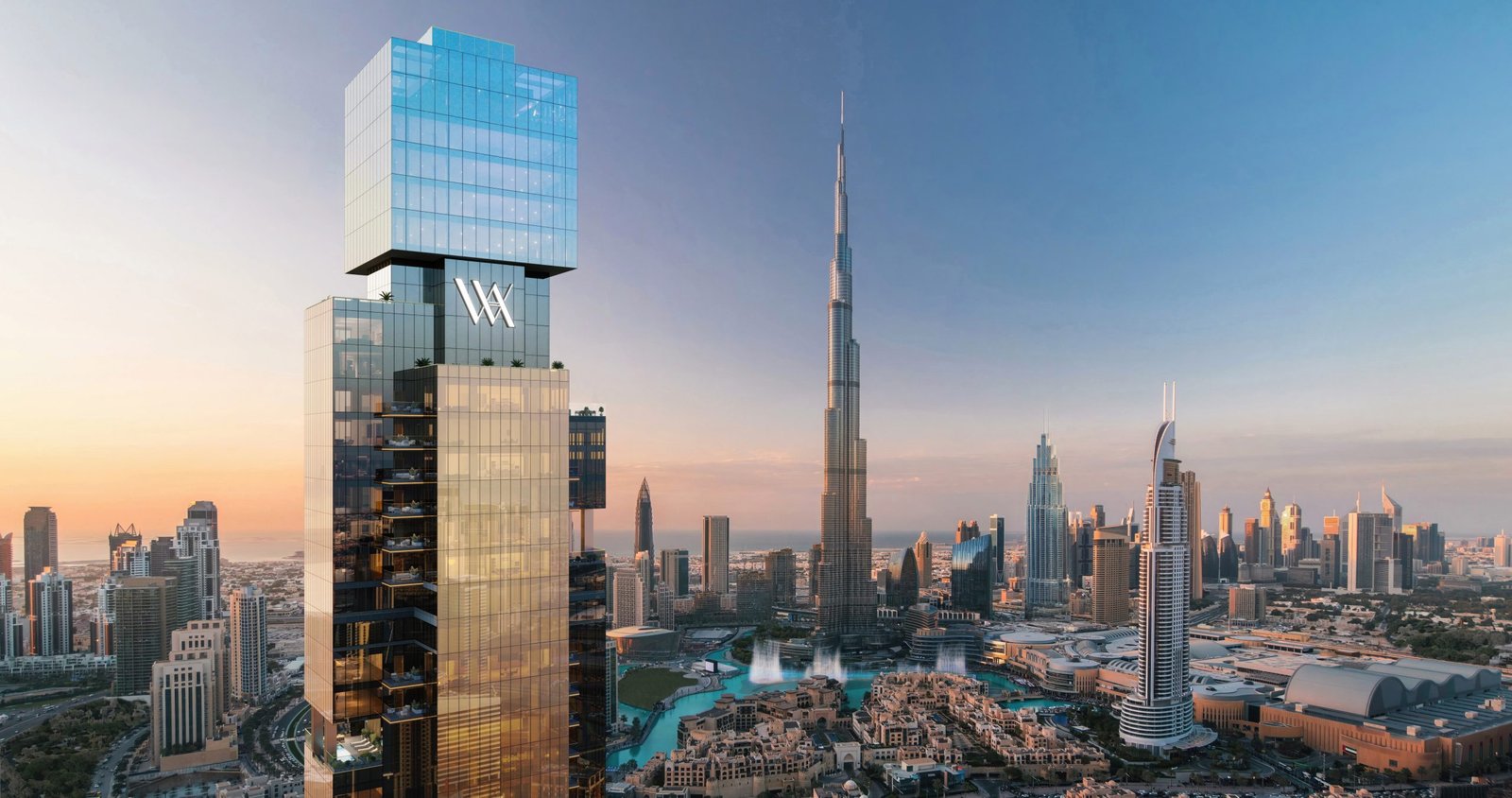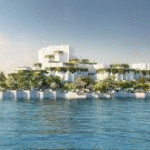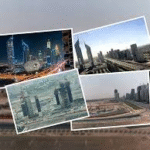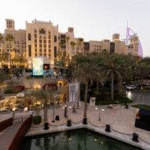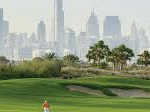Now Reading: ENERGY EFFICIENT VILLA DUBAI: Unlocking Your Ideal Sustainable Home
-
01
ENERGY EFFICIENT VILLA DUBAI: Unlocking Your Ideal Sustainable Home
ENERGY EFFICIENT VILLA DUBAI: Unlocking Your Ideal Sustainable Home
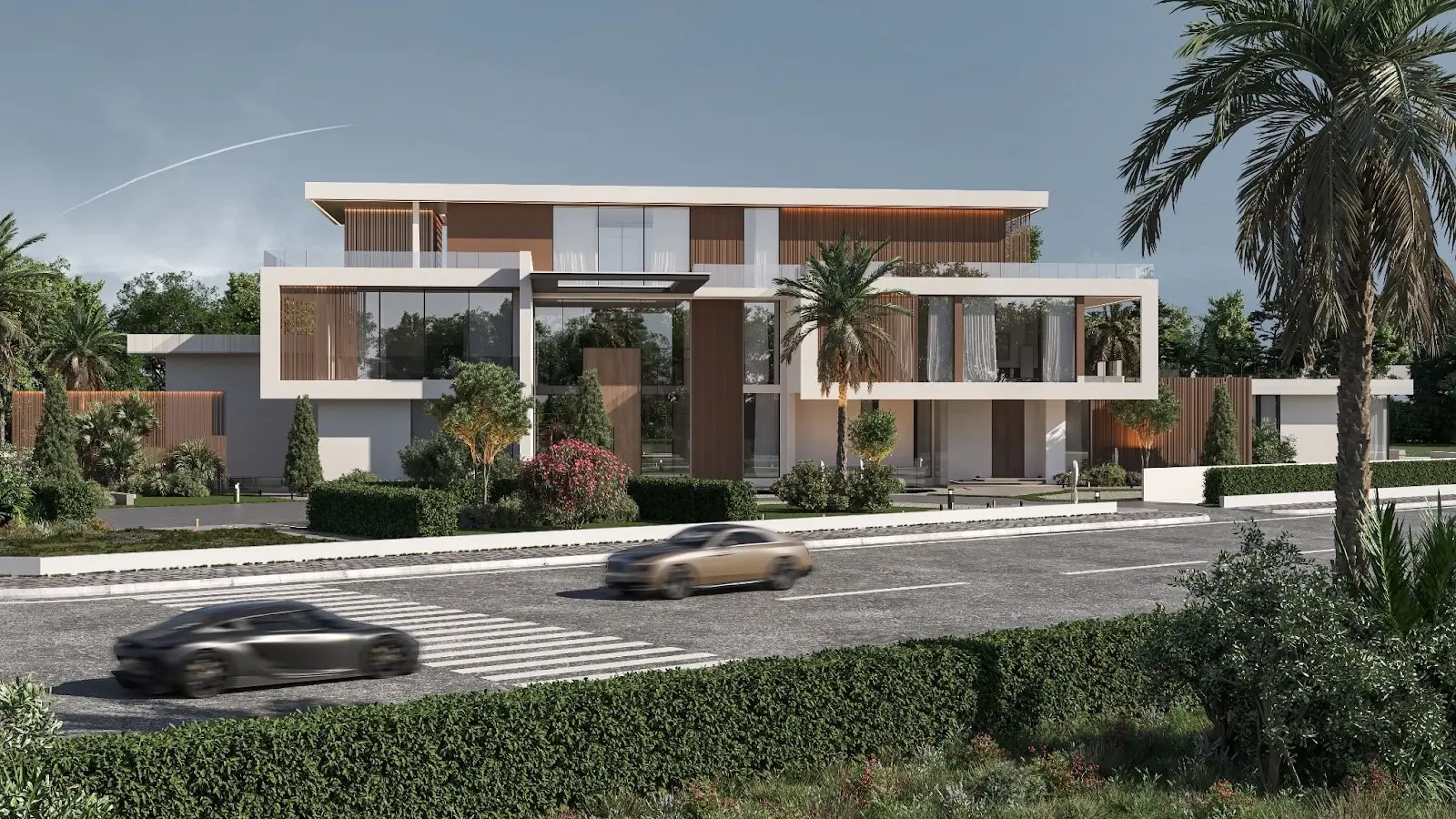
Table of Contents
ENERGY EFFICIENT VILLA DUBAI: Dubai, a city celebrated globally for its luxurious lifestyle and architectural marvels, is increasingly establishing itself as a pioneer in sustainable urban development. A significant component of this transformation is the growing emphasis on energy-efficient villas. These residences are not merely about reducing utility bills; they represent a fundamental shift towards ecologically responsible living, aligning with Dubai’s ambitious green initiatives and the UAE’s Net Zero by 2050 strategic vision. As of mid-2025, energy-efficient villas are becoming a hallmark of modern residential developments, blending cutting-edge technology with thoughtful design to create homes that are both opulent and environmentally conscious.
What Defines an Energy-Efficient Villa in Dubai?
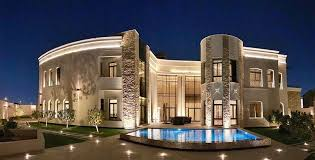
An energy-efficient villa in Dubai is a residential property meticulously designed, constructed, and operated to minimize its energy consumption throughout its lifecycle, particularly in the face of the emirate’s demanding climate. This involves a multi-faceted approach, integrating innovative architectural principles with advanced technological solutions:
- Superior Thermal Insulation: Given Dubai’s intense summer heat, robust insulation is paramount. Energy-efficient villas feature high-performance insulation in walls, roofs, and foundations to significantly reduce heat gain from the outside and retain cool air inside. This minimizes the workload on cooling systems.
- Advanced Glazing and Shading: Windows are critical points of heat transfer. Energy-efficient villas utilize double or triple-glazed windows with low-emissivity (Low-E) coatings that reflect solar radiation while allowing natural light to enter. Strategic placement of windows, combined with external shading devices like louvers, overhangs, and recessed balconies, further reduces direct solar exposure.
- High-Efficiency HVAC Systems: Air conditioning accounts for a substantial portion of energy consumption in Dubai. These villas incorporate highly efficient HVAC systems, often with variable refrigerant flow (VRF) or district cooling connections, smart thermostats, and zoning capabilities to precisely control temperatures in different areas of the house, avoiding unnecessary cooling.
- Renewable Energy Integration: Harnessing Dubai’s abundant sunshine is a key strategy. Many energy-efficient villas are equipped with rooftop solar photovoltaic (PV) panels to generate clean electricity, significantly offsetting grid power consumption. Initiatives like “Shams Dubai” enable homeowners to connect their solar systems to the DEWA (Dubai Electricity and Water Authority) grid, allowing them to feed excess energy back and reduce their bills through net-metering. Solar thermal water heaters are also widely mandated for hot water generation, further reducing reliance on electric heaters.
- Smart Home Automation Systems: Integrated smart home technologies are central to optimizing energy use. These systems can control lighting, air conditioning, and appliances based on occupancy, time of day, and real-time weather data. Features like automated blinds, intelligent thermostats that learn occupant preferences, and centralized control via smartphones or voice commands enhance efficiency and convenience.
- Energy-Efficient Lighting and Appliances: The widespread adoption of LED lighting, which consumes significantly less electricity and has a longer lifespan than traditional bulbs, is standard. Furthermore, energy-efficient appliances (washing machines, refrigerators, dishwashers) with high energy star ratings are chosen to minimize power drain.
- Water Conservation Measures: While primarily focused on energy, energy-efficient villas also incorporate water-saving features. Low-flow fixtures (taps, showers, toilets), greywater recycling systems (for irrigation or toilet flushing), and drought-tolerant landscaping with smart irrigation systems reduce the energy required for water treatment and pumping.
Why Energy Efficiency is Crucial in Dubai
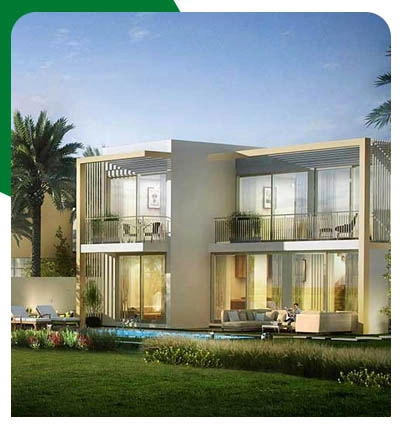
The focus on energy efficiency in Dubai is driven by a convergence of environmental, economic, and strategic factors:
- Extreme Climate: Dubai’s hot desert climate necessitates extensive cooling, which is a major energy consumer. Energy-efficient designs directly address this by reducing cooling loads.
- National Sustainability Agenda: The UAE’s ambitious Net Zero by 2050 Strategic Initiative and Dubai’s Clean Energy Strategy 2050 aim to make Dubai a global hub for clean energy and green economy. Energy-efficient buildings are fundamental to achieving these targets.
- Resource Management: Reducing energy consumption helps conserve natural resources and lessens the burden on infrastructure, promoting long-term resource security.
- Economic Diversification: Investment in green technologies and sustainable infrastructure supports Dubai’s vision of diversifying its economy away from hydrocarbons.
- Global Leadership: By setting high standards for energy efficiency, Dubai reinforces its commitment to global environmental stewardship and attracts international talent and investment aligned with sustainable practices.
Popular Communities and Developments Offering Energy-Efficient Villas
Dubai is home to several pioneering communities and developments that exemplify energy-efficient living, often combining luxury with sustainability:
- The Sustainable City: A groundbreaking development designed for net-zero energy, featuring solar-powered villas, extensive green spaces, urban farms, and car-free zones. It serves as a benchmark for integrated sustainable living.
- Tilal Al Ghaf (Majid Al Futtaim): This community emphasizes nature-inspired living with properties incorporating passive design, smart home technology, solar lighting, and preserved natural habitats. Its villas are designed for optimal energy performance.
- Expo City Dubai (formerly District 2020): Emerging from the legacy of Expo 2020, this district is envisioned as a smart and sustainable city, with LEED-certified commercial and residential buildings, extensive pedestrian and cycling infrastructure, and renewable energy integration.
- Mohammed Bin Rashid City (MBR City), particularly Meydan and Sobha Hartland: These upscale areas are incorporating green elements, large landscaped parks, and energy-efficient construction standards within their luxurious villas.
- Dubai Hills Estate (Emaar): While a premium development, it progressively integrates sustainable elements, including smart irrigation, greywater reuse, and properties built with energy-efficient materials and designs.
- Al Barari: Known as Dubai’s “green heart,” this community features luxurious villas set amidst lush botanical gardens. While focusing on water conservation through its landscape, its modern villas also incorporate energy-efficient systems.
- Damac Hills 2 (formerly Akoya Oxygen): This community increasingly focuses on green initiatives, including high-efficiency appliances, sustainable materials, and solar illumination in its residential units.
Benefits for Homeowners
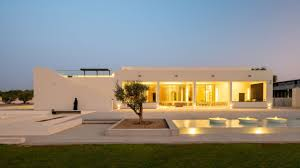
Investing in an energy-efficient villa in Dubai offers a compelling array of benefits for homeowners:
- Significant Cost Savings: The most immediate and tangible benefit is a substantial reduction in utility bills. Energy-efficient designs, solar power integration, and smart home systems can lead to savings of 30-50% on electricity and water costs compared to conventional villas.
- Enhanced Comfort and Well-being: Superior insulation and advanced HVAC systems ensure a consistently comfortable indoor temperature and improved indoor air quality by reducing pollutants and allergens. Natural light further enhances the living environment.
- Higher Property Value and Marketability: Energy-efficient villas are increasingly sought after. They command higher resale values (often 7-12% higher for certified green homes) and are more attractive to environmentally conscious buyers and tenants, making them a future-proof investment.
- Reduced Environmental Footprint: Homeowners directly contribute to reducing carbon emissions, conserving water, and minimizing waste, aligning with personal values of environmental stewardship.
- Potential for Government Incentives: Homeowners benefiting from initiatives like Shams Dubai can further offset their energy costs, and the general push towards green buildings can lead to indirect benefits like lower service charges for sustainable communities.
- Climate Resilience: These homes are inherently more resilient to Dubai’s harsh climate, maintaining comfort and performance even during peak summer months.
Government Initiatives and Regulations Supporting Energy Efficiency
The Dubai government has implemented a comprehensive regulatory framework to drive energy efficiency in residential buildings:
- Al Sa’fat – Dubai Green Building System: Developed by the Dubai Municipality (DM), Al Sa’fat is a mandatory green building rating system for all new constructions, including villas. It sets stringent requirements for energy efficiency, water conservation, material selection, and indoor environmental quality, with different tiers (Bronze, Silver, Gold, Platinum). All new villas must meet at least the Bronze Sa’fat rating. The regulations mandate features like efficient insulation, solar hot water systems, and smart control systems.
- Shams Dubai: An initiative by DEWA, Shams Dubai encourages building owners to install solar PV panels on their rooftops to generate electricity and connect them to DEWA’s grid. This net-metering scheme allows consumers to offset their DEWA bills, further promoting renewable energy use in villas.
- Dubai Integrated Energy Strategy 2030 (DIES 2030): Aims to reduce energy demand by 30% by 2030 and diversify the energy mix. Energy-efficient buildings are a key component of this strategy.
- UAE Energy Strategy 2050: Targets increasing the contribution of clean energy to 50% of the total energy mix and reducing the carbon footprint of power generation by 70% by 2050.
- Retrofitting Initiatives: While primarily focused on new buildings, Dubai also has initiatives to encourage the retrofitting of existing buildings to improve their energy efficiency.
Challenges in Adoption and Implementation
Despite the clear benefits and strong governmental support, certain challenges exist:
- Initial Investment Costs: While long-term savings are significant, the upfront cost of high-performance materials, advanced HVAC systems, and solar installations can be higher than conventional construction. This initial investment can be a deterrent for some buyers or developers.
- Knowledge and Awareness Gaps: A continued need for greater public awareness about the tangible benefits of energy-efficient homes, beyond just the environmental aspect, to drive consumer demand. Similarly, training for construction professionals is crucial for proper implementation.
- Supply Chain Maturity: Ensuring a consistent and cost-effective supply of certified green building materials and advanced energy-efficient technologies can sometimes be a challenge, though this is rapidly improving.
- Maintenance of Advanced Systems: Energy-efficient homes often feature sophisticated systems that require specialized maintenance, which might incur additional costs or require specific expertise.
Future Outlook and Trends for 2025/2026
The trajectory for energy-efficient villas in Dubai is one of accelerating growth and innovation:
- Increasing Mandates: Expect Al Sa’fat regulations to become even more stringent, with a likely push towards higher mandatory ratings (e.g., Silver) for all new villas, or even broader application to major renovations.
- Hyper-Integration of Smart Technology: The next few years will see even deeper integration of AI and IoT into villa management systems. Homes will become more predictive, automatically adjusting to occupant behavior and external conditions for optimal energy savings without manual intervention.
- Net-Zero and Positive Energy Villas: The focus will shift towards achieving net-zero energy consumption or even net-positive energy, where villas generate more electricity than they consume, feeding excess back into the grid.
- Advanced Building Materials: Research and development will lead to the widespread adoption of innovative materials, such as phase-change materials for thermal regulation, self-healing concrete, and advanced smart glass.
- Green Financing Solutions: More banks and financial institutions are expected to offer attractive green mortgages and financing products specifically for energy-efficient villas, making them more accessible to a wider market.
- Biophilic Design Integration: A growing trend towards incorporating natural elements, green spaces, and vertical gardens into villa designs to enhance not only aesthetics but also passive cooling and air quality.
In essence, energy-efficient villas in Dubai are at the forefront of a global movement towards sustainable urban living. They epitomize a future where luxury and environmental responsibility coexist, offering homeowners not just a residence, but a healthier, more cost-effective, and future-proof lifestyle. As Dubai continues its journey towards becoming one of the world’s most sustainable cities, these villas will undoubtedly play a pivotal role in shaping its green and prosperous landscape.
WATCH MORE:https://www.youtube.com/watch?v=WCKz8ykyI2E
READ MORE: Green Building Rating Dubai: Elevating Smart Sustainable Projects




